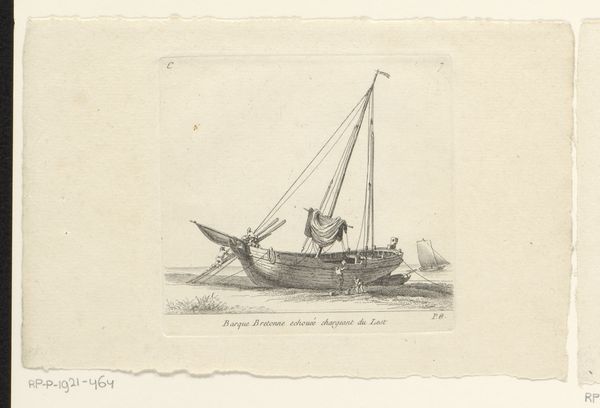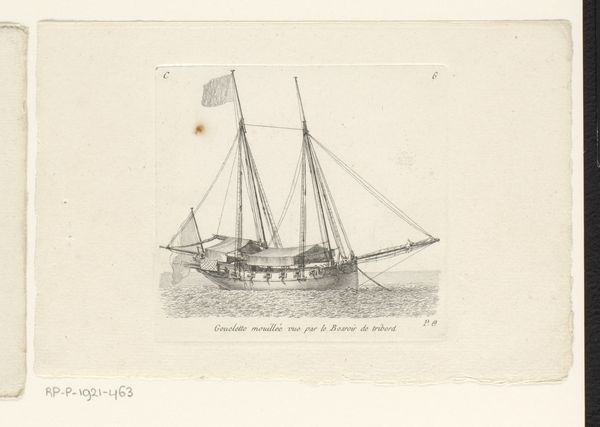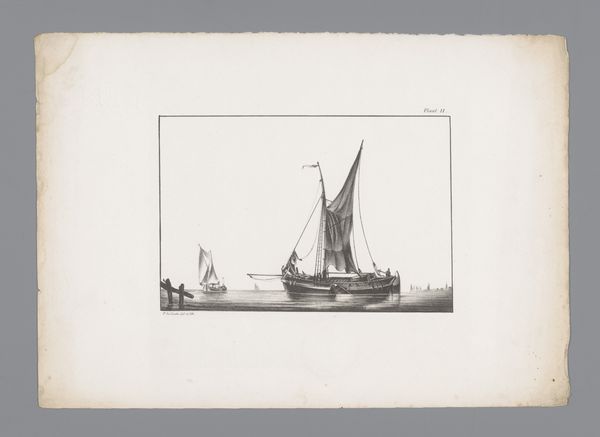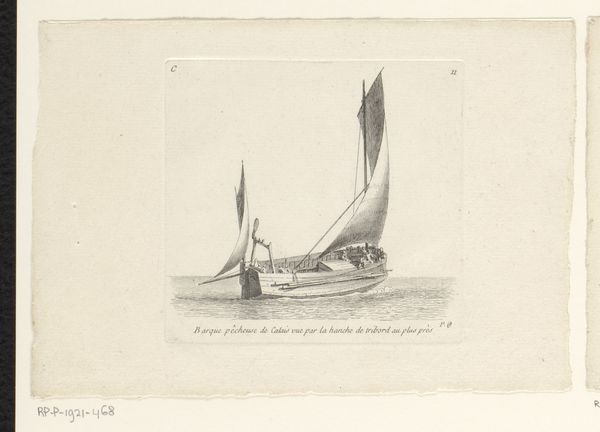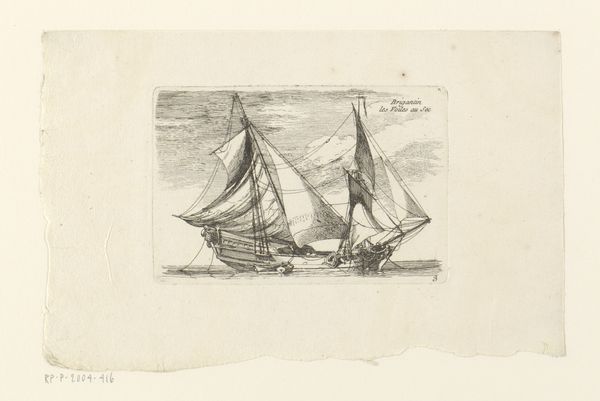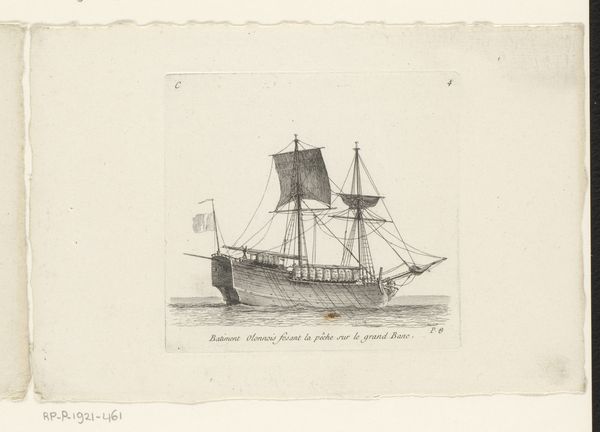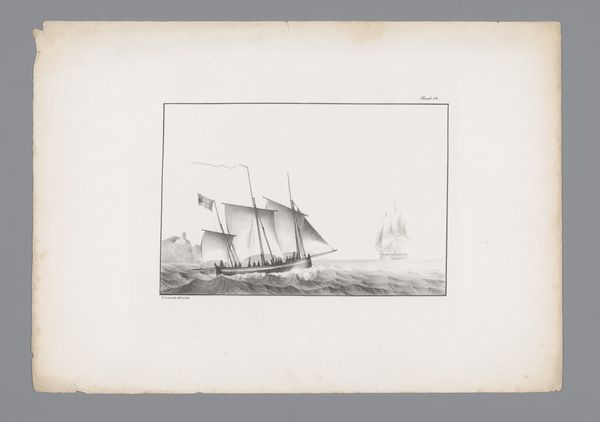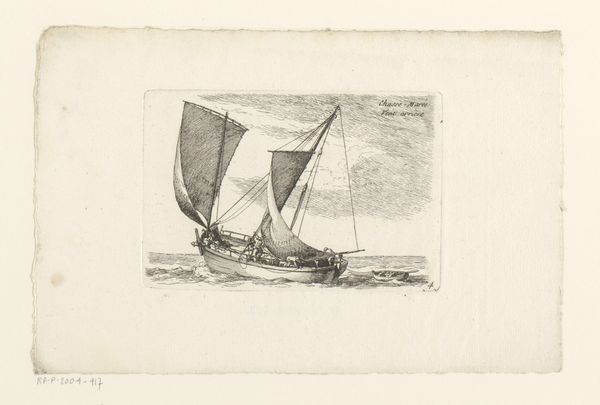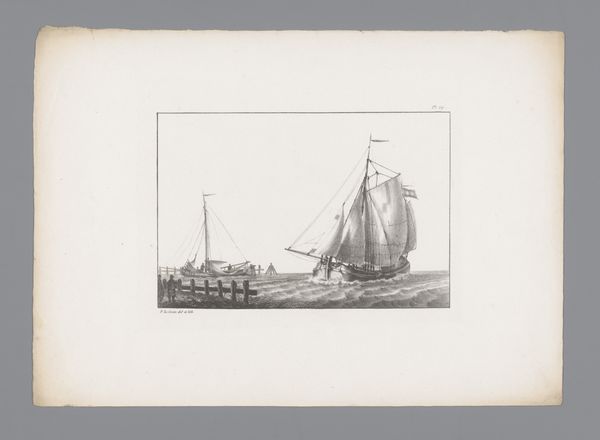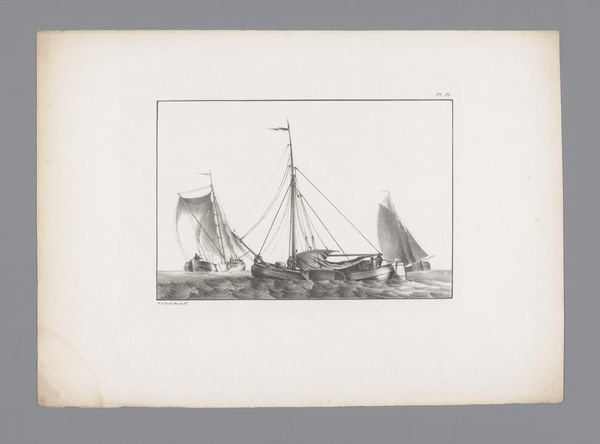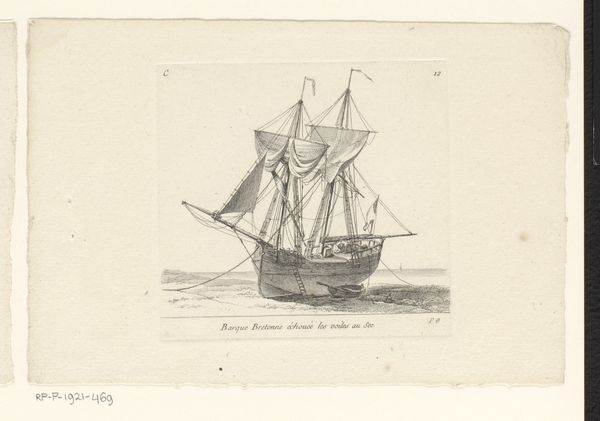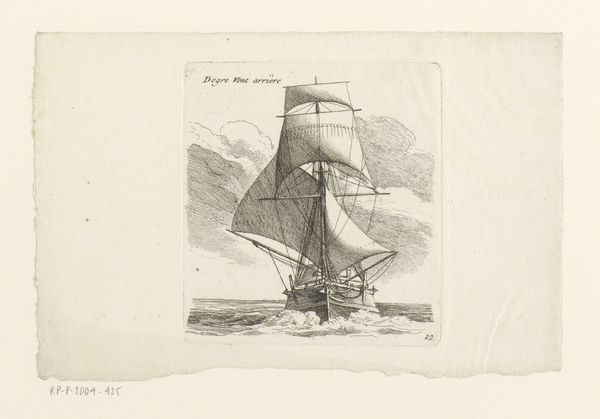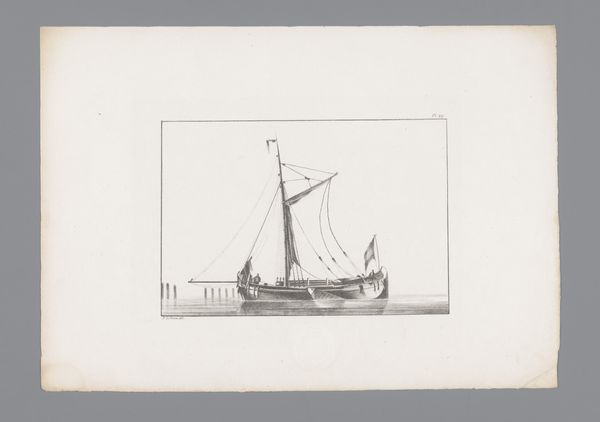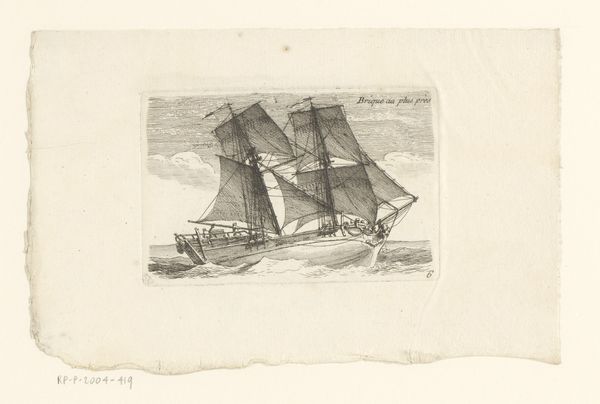
Dimensions: height 113 mm, width 117 mm
Copyright: Rijks Museum: Open Domain
This etching of a ship was made by Pierre Ozanne sometime in the late 18th century, using a copper plate and etching tools. The printmaking process involves covering a metal plate with a waxy, acid-resistant layer called the 'ground.' The artist then scratches an image into this ground, exposing the metal. When the plate is submerged in acid, it bites into the exposed lines, creating grooves. Ink is then applied to the plate, filling these grooves, and the surface is wiped clean. Finally, the plate is pressed onto paper, transferring the ink and creating a print. The resulting image possesses a unique character due to the etched lines, allowing for fine detail and tonal variations. The imagery and the printmaking process were both labor-intensive. The print could have been a commodity used for education, a commemorative object, or simply a souvenir. By attending to materials, making, and context, we expand our appreciation for this artwork, challenging traditional distinctions between fine art and craft.
Comments
No comments
Be the first to comment and join the conversation on the ultimate creative platform.
